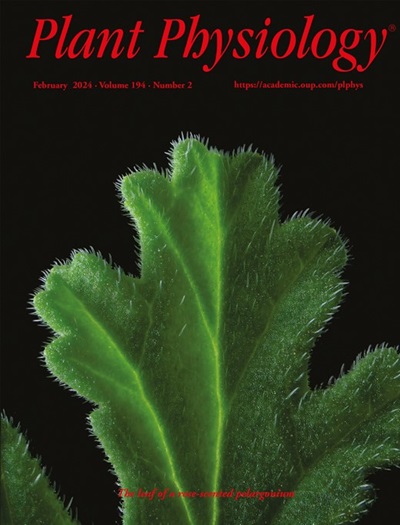The role of Arabidopsis Splicing Factor 30 in floral transition and the implications of its alternative splicing
IF 6.9
1区 生物学
Q1 PLANT SCIENCES
引用次数: 0
Abstract
Splicing factor 30 (SPF30) is a pivotal spliceosomal protein in human pre-mRNA splicing; however, its function in plants remains unclear. Previously, we identified the SPF30 genes throughout the plant kingdom and found that they have a conserved second intron that undergoes frequent alternative splicing (AS). In this study, we characterized SPF30 and its various alternative isoforms in Arabidopsis (Arabidopsis thaliana). Loss-of-function mutation in SPF30 caused early flowering and impaired expression and splicing of the floral repressor FLOWERING LOCUS C (FLC). Subsequent genetic and molecular analyses further suggested that SFP30 may regulate floral transition mostly through FLC. The primary transcript, SPF30.1, encodes a functional splicing factor associated with spliceosomal core proteins, while isoforms retaining a partial fragment of the second intron are subjected to nonsense-mediated mRNA decay (NMD). Moreover, a long, NMD-immune isoform with the entire second intron retained can be further processed to either SPF30.1 or NMD-sensitive isoforms, potentially enabling the fine-tuning of SPF30 expression post-transcriptionally. Analysis of the addition and deletion of the second intron further indicated that it negatively controls SPF30 function. Our results highlight the critical role of SPF30 as a plant splicing factor involved in floral transition and propose a mechanism for the regulation of SPF30 itself via AS.拟南芥剪接因子30在花过渡中的作用及其选择性剪接的意义
剪接因子30 (Splicing factor 30, SPF30)是人类pre-mRNA剪接的关键剪接蛋白;然而,其在植物中的功能尚不清楚。之前,我们在整个植物界鉴定了SPF30基因,发现它们有一个保守的第二内含子,经历频繁的选择性剪接(AS)。在本研究中,我们对拟南芥(Arabidopsis thaliana)中SPF30及其多种替代亚型进行了表征。SPF30的功能缺失突变导致开花提早,开花抑制因子FLC的表达和剪接受损。随后的遗传和分子分析进一步表明,SFP30可能主要通过FLC调控花的转变。初级转录本SPF30.1编码与剪接体核心蛋白相关的功能性剪接因子,而保留第二内含子部分片段的同工异构体则受到无义介导的mRNA衰变(NMD)的影响。此外,保留整个第二内含子的nmd免疫长异构体可以进一步加工成SPF30.1或nmd敏感异构体,从而有可能在转录后微调SPF30的表达。对第二个内含子的添加和删除分析进一步表明它负控制SPF30的功能。我们的研究结果强调了SPF30作为植物剪接因子参与花过渡的关键作用,并提出了一个通过as调节SPF30自身的机制。
本文章由计算机程序翻译,如有差异,请以英文原文为准。
求助全文
约1分钟内获得全文
求助全文
来源期刊

Plant Physiology
生物-植物科学
CiteScore
12.20
自引率
5.40%
发文量
535
审稿时长
2.3 months
期刊介绍:
Plant Physiology® is a distinguished and highly respected journal with a rich history dating back to its establishment in 1926. It stands as a leading international publication in the field of plant biology, covering a comprehensive range of topics from the molecular and structural aspects of plant life to systems biology and ecophysiology. Recognized as the most highly cited journal in plant sciences, Plant Physiology® is a testament to its commitment to excellence and the dissemination of groundbreaking research.
As the official publication of the American Society of Plant Biologists, Plant Physiology® upholds rigorous peer-review standards, ensuring that the scientific community receives the highest quality research. The journal releases 12 issues annually, providing a steady stream of new findings and insights to its readership.
 求助内容:
求助内容: 应助结果提醒方式:
应助结果提醒方式:


